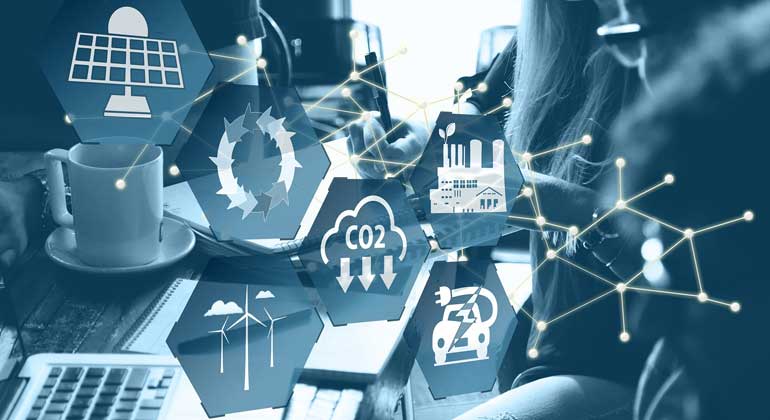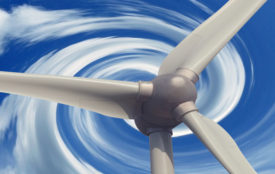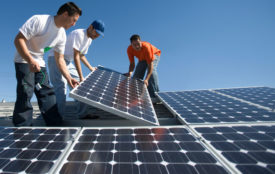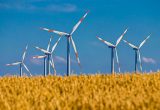Clean sources of generation are set to cover all of the world’s additional electricity demand over the next three years
Renewables are growing rapidly and nuclear power is on track to reach new all-time high next year, enabling low-emissions generation to outpace robust electricity demand growth.
Global electricity demand is expected to grow at a faster rate over the next three years as the clean energy transition gathers speed, with all the additional demand forecast to be covered by technologies that produce low-emissions electricity, according to a new report from the IEA.
Electricity 2024 is the latest edition of the IEA’s annual analysis of electricity market developments and policies, providing forecasts for demand, supply and carbon dioxide (CO2) emissions from the sector through 2026. The report finds that while global growth in electricity demand eased slightly to 2.2% in 2023 due to falling electricity consumption in advanced economies, it is projected to accelerate to an average of 3.4% from 2024 through 2026. About 85% of the increase in the world’s electricity demand through 2026 is expected to come from outside advanced economies – most notably China, India and countries in Southeast Asia.
However, record-setting electricity generation from low-emissions sources – comprising renewables, such as solar, wind and hydro, as well as nuclear power – should reduce the role of fossil fuels in providing power for homes and businesses. Low-emissions sources are expected to account for almost half of the world’s electricity generation by 2026, up from a share of just under 40% in 2023.
Renewables are set to make up more than one-third of total electricity generation by early 2025, overtaking coal. By 2025, nuclear power generation is also forecast to reach an all-time high globally as output from France climbs, several plants in Japan come back online, and new reactors begin commercial operations in many markets, including in China, India, Korea and Europe. When the share of fossil fuels in global generation falls beneath 60%, this will mark the first time it has gone below this threshold in IEA records dating back more than five decades.
“The power sector currently produces more CO2 emissions than any other in the world economy, so it’s encouraging that the rapid growth of renewables and a steady expansion of nuclear power are together on course to match all the increase in global electricity demand over the next three years,” said IEA Executive Director Fatih Birol. “This is largely thanks to the huge momentum behind renewables, with ever cheaper solar leading the way, and support from the important comeback of nuclear power, whose generation is set to reach a historic high by 2025. While more progress is needed, and fast, these are very promising trends.”
The report finds that the increase in electricity generation from renewables and nuclear appears to be pushing the power sector’s emissions into structural decline. Global emissions from electricity generation are expected to decrease by 2.4% in 2024, followed by smaller declines in 2025 and 2026.
The decoupling of global electricity demand and emissions would be significant given the energy sector’s increasing electrification, with more consumers using technologies such as electric vehicles and heat pumps. Electricity accounted for 20% of final energy consumption in 2023, up from 18% in 2015, though meeting the world’s climate goals would require electrification to advance significantly faster in the coming years.
Electricity prices were generally lower in 2023 than in 2022. However, price trends varied widely among regions, affecting their economic competitiveness. Wholesale electricity prices in Europe declined by more than 50% on average in 2023 after having reached record highs in 2022 following Russia’s invasion of Ukraine. Yet electricity prices in Europe last year were still more than double pre-Covid levels, while prices in the United States were about 15% higher than in 2019. Electricity demand in the European Union declined for the second consecutive year in 2023, and it is not expected to return to levels seen before the global energy crisis until 2026 at the earliest.
Although demand for electricity in Europe and the United States declined in 2023, many emerging and developing economies recorded robust growth that is set to continue through 2026 in response to increasing populations and industrialisation. During the outlook period, China is expected to account for the largest share of the global increase in electricity demand in terms of volume, even as its economic growth slows and becomes less reliant on heavy industry. Meanwhile, India is set to see electricity demand rise the fastest among major economies, with demand added over the next three years forecast to be roughly equivalent to the current electricity consumption of the United Kingdom.
As a region, Africa remains an outlier in electricity demand trends, according to the report’s analysis. While electricity use per capita in India and Southeast Asia has risen rapidly, it has been effectively stagnant in Africa for more than three decades.
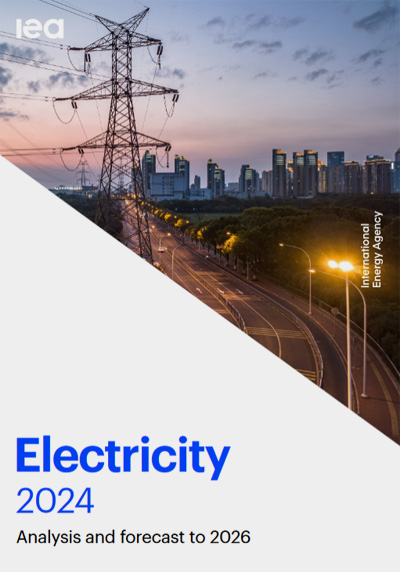
“Electricity use is a key indicator of economic development in any country, and it’s a grim sign that it has flatlined in Africa on a per capita basis for over three decades,” Dr Birol said. “Access to reliable, affordable and sustainable energy for all citizens is essential for African countries to achieve their economic and climate goals. The international community needs to work together with African governments to enable the urgent progress that is needed.”
- REPORT: „ELectricity 2024 / Analysis and forecast to 2026“ pdf | Electricity is central to the functioning of modern societies and economies – and its importance is only growing as technologies that run on electricity, such as electric vehicles and heat pumps, become increasingly popular. Power generation is currently the largest source of carbon dioxide (CO2) emissions in the world, but it is also the sector leading the transition to net zero emissions through the rapid expansion of renewable energy sources such as solar and wind power.
